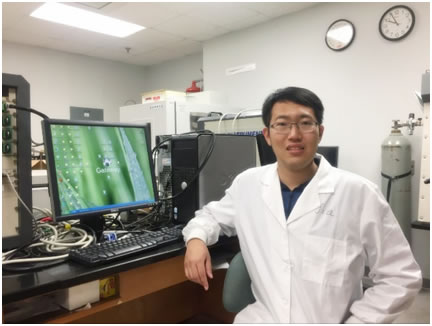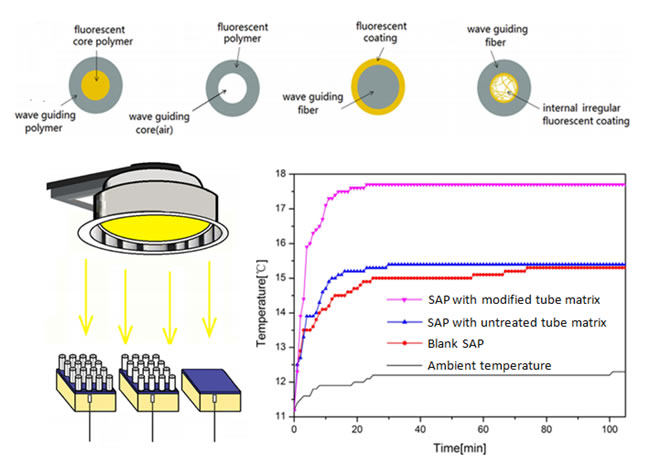Recently, the Ph.D candidate Hao Jia supervised by Prof. Guo in our college has made important progress in the development of an innovative bionic photo-thermal energy conversion fiber model based on the solar energy conversion mechanism of polar bear (Ursusmaritimus) hairs. This work has been published with the title of “Design and optimization of a photo-thermal energy conversion model based on polar bear hair” in journal of Solar Energy Materials & Solar Cells(http://doi.org/10.1016/j.solmat.2016.09.017)

Solar energy has long been regarded as an essential and renewable resource of energy for relieving current energy crises. Regarding the thermal energy, plenty of relevant research work on exploring new and more effective solar thermal conversion devices have been done by many researchers. However, the current solar thermal utilization products are mostly rigid plate solar collectors, which have many restrictions in terms of flexibility and portability. Nature always give us great inspiration of developing high technology products. Early studies showed that the transparent polar bear hairs with hollow structures can trap incident light like optical fibers by guiding sunlight into absorption ending, especially in the wavelengths of ultraviolet radiation. This continuous process repeats all the time and then leads to the guiding of light toward the polar bear's black skin where it is absorbed and finally converted into heat. Also, polar bear fur plays vital role in thermal insulation materials. Inspired by the structures and function of polar bear hairs, considerable efforts have been committed to develop new kinds of fibers and thermal collectors to collect solar energy. And it has been demonstrated that PMMA fiber models an outstanding way of light harvesting in terms of high transmission efficiency compared to traditional heat exchangers.
In this paper, a new bionic photo-thermal conversion waveguide fiber structure with fluorescent dyestuff is designed based on earlier research of bionic models and the core part of waveguide fiber is closer to the real polar bear hairs after irregular internal coating. By selecting the appropriate adhesive solution and optimizing the concentration of different fluorescent dyestuff materials, a more stable structure of inner-coating fiber model with a relatively high reflectance in the IR and a comparatively high thermal energy release function was obtained. For the coating dyestuffs, coumarin 1 has a higher Stokes shift comparing with coumarin 6, which enhance the photo-thermal conversion efficiency of this innovative fiber model with coumarin 1.
Design concepts of optically active fibers and photo-thermal conversion experiments of models
Moreover, the hollow structure used in this model can not only improve the device's thermal insulation property, but also provide inner scattering processes to couple more sunlight for conversion base. After inner coating process, the surface reflectivity performance of the model has been decreased, which is beneficial for absorbing more sunlight. And the outstanding light harvesting property of the new model has been further validated by the solar thermal conversion experiment. Thus, the new model could be a potential promising and alternative approach for developing new solar energy harvesting products.

